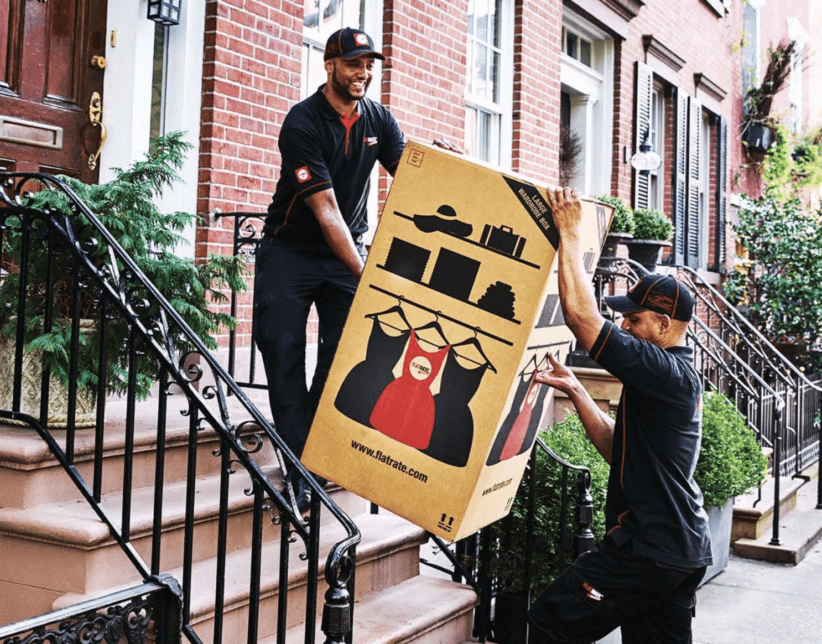When you share a two-bedroom apartment with your spouse and seven children—and do so very happily—it’s probably safe to say that you know a thing or two about adapting small living spaces into family sanctuaries. At least this much is true for Robert and Cortney Novogratz, who have made a name for themselves in the interior design market by transforming dilapidated disasters into hip homes. After successfully renovating over 60 spaces that run the gamut from a Gramercy Park abode to a West Village railroad, and from a Hamptons beach house to a New Jersey hotel, the design-savvy couple is releasing their second book, Home by Novogratz, on October 9.

This month, the fixer-uppers share some ideas with New York Family for making any NYC apartment a better space to raise kids. As they note in their forthcoming tome, getting started is frequently the hardest part of rethinking living spaces, but hopefully these tips will make the process less intimidating.
TEN STEPS TO CREATING A KID-FRIENDLY HOME
1. Cut the clutter. Families should try to set aside time to clean out the apartment at least thrice a year. “There’s always stuff coming into your house—you go to a birthday party, bring back a goody bag,” the Novogratz point out. Getting rid of clutter regularly will help prevent monstrous build-ups.
2. More specifically, toss excessive toys. Whittling down the collection can be difficult, but Robert and Cortney suggest targeting what they refer to as plastic toys—superhero and action figures, doll castles, and other items that can take up space. (Bonus tip: For quick tidying up, dedicate one bin to the plastic toys that you do keep.)
3. Give children a space to call their own. Even though most New York apartments aren’t very expansive, each child should have his or her own workspace. In Home by Novogratz, a chapter on a shared room for triplets features a long, narrow desk with stools that tuck right under as a space-saving solution. Which leads us to…
4. Always have tools for creativity at hand. Perhaps this is par for the course, but the Novogratz are huge champions of keeping sketch pads and coloring pencils at the ready near children’s workspaces. Whether they’re drawing or coloring or simply doing homework, it’s important that kids have outlets for tapping into their imaginations.
5. Incorporate music. This can come in the form of a cool record player, an iPod-docking speaker, or instruments to play. The designers believe this brings both creativity and opportunities for cross-generational bonding into the household. “Our kids always listen to way cooler music than we know about,” they laugh.

6. Bring the outdoors in. “Nature is proven to have positive effects on people, especially kids,” say the Novogratz. Aesthetics aside, natural elements can act as educational tools: “You can teach your kids about nature and caring for things by having plants or even fresh flowers.” Of course, this point doesn’t have to be taken that literally—beautiful landscape photography and wallpaper or pillows with nature-inspired patterns and colors add an organic feel, too. (Bonus tip: Blik and Timothy Sue are both great for temporary wallpaper and decals.)
7. Use art unabashedly. “A lot of people will decorate the living room and guest room with art, but if Robert and I go hang out with our kids in their room, we want to be inspired to see something beautiful on their walls too,” Cortney says. “Just because you have children doesn’t mean you must sacrifice style.”
8. Don’t be afraid to mismatch. If you have multiple children sharing one bedroom, as is often the case in NYC apartments, it’s good to personalize and decorate in different colors. “I personally don’t like things to match, as long as you pull in some of the same color tones,” says Cortney. In fact, she points out that kids will have a better sense of ownership (and be more likely the take responsibility) when something is clearly their own.
9. Prioritize the two Cs, comfort and creativity. A lot of apartments feel cold and museum-like, the designers note, but homes should be fun and comfortable. It’s all about taking a more playful approach and remembering that kids will be kids. “We have five boys who jump on couches and wrestle, and that’s okay,” the Novogratz say. “A lot of times people have these really amazing designers…turn their homes into something that’s beautiful—but not [an accurate reflection of] how they live.”
10. Make sure your home reflects who you are. Make an adventure out of shopping a flea market together, or show off what’s already at home by opting for cool bookshelves that can display trophies, mementos, and other objects that personalize the rooms.
OTHER CONSIDERATIONS
Before taking any action, figure out how much you want to invest in your home—on both the financial and personal involvement fronts. After you set a budget for the amount of work you want done, it’s just as important to think about how much you want to take on yourself and where you might want to elect for help.
It’s also not a bad idea to get the kids involved. “If you ask your kids for their opinion,” the Novogratz say, “you’d be surprised that they actually have one!” This can mean something as simple as letting your children choose between two desks that you’ve already vetted. If you’re starting from scratch, you could even let the kids draw out a floor plan for brainstorming. Either way, kids are more likely to show interest and a little more respect for their rooms when they have a say.
No matter the family or client, Robert and Cortney always push for color to lighten things up, whether it’s on the walls or in the throw pillows. And, naturally, they suggest being committed to the project without taking things too seriously. “Try to enjoy the process and own up to the fact that it’ll bring a lot of anxiety but also bring up a lot fun,” Cortney insists. “At the end of the day, if it’s just a painting on the wall, you can always change it.”
Read about Robert and Cortney’s quick-makoover solution: vintage furniture.





















